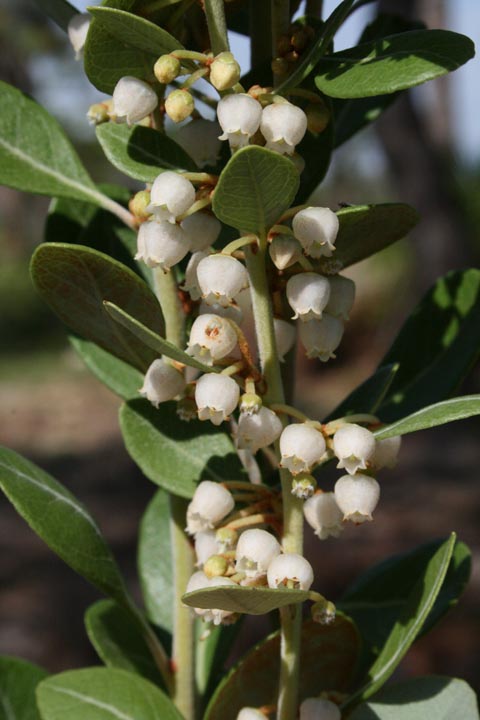Lyonia
|
Family: Ericaceae |
Shrubs or trees, (sometimes with woody burl, resprouting after fire). Stems erect to arching; twigs hairy, sometimes glabrescent (sometimes also lepidote). Leaves deciduous or persistent; blade elliptic, obovate, or ovate, membranous to coriaceous, margins entire, undulate, or serrulate [irregularly serrate], plane or revolute, surfaces multicellular, peltate-scaled or short-stalked stipitate-glandular-hairy, often unicellular-hairy on major veins or abaxial surface; venation brochidodromous (or reticulodromous). Inflorescences axillary fascicles, panicles, or racemes, (2-)5-8(-12)-flowered, sometimes flowers solitary, (produced just before flowering). Pedicels: bracteoles 2, at or near base. Flowers: sepals usually [4-]5[-8], slightly connate, ovate-deltate to lanceolate; petals usually [4-]5[-8], connate nearly their entire lengths, white to red, corolla cylindric to urceolate, lobes much shorter than tube, (sparsely stipitate-glandular-hairy or peltate-scaled); stamens usually [8-]10[-16], included; filaments geniculate, flattened, roughened or hairy, with or without spurs; anthers without awns, dehiscent by elliptic pores; pistil usually [4-]5[-8]-carpellate; ovary [4-]5[-8]-locular; (style slightly longer than stamens); stigma capitate-truncate. Fruits capsular, globose to ovoid or ellipsoid, dry, (with [4-]5[-8] pale, decidedly thickened, whitish sutures). Seeds ca. 100-300, ellipsoidal, narrowly oblong, obovoid to angular-obovoid or narrowly conic, (sometimes tailed); testa cells elongate. x = 12. Fls 5-merous; cal saucer-shaped to campanulate, deeply divided, the lobes valvate; cor globose to tubular or ovoid, the lobes short; stamens well included; filaments basally dilated, geniculate above; anthers ovate, dorsifixed, spurred but awnless, opening by 2 terminal pores; style columnar to fusiform; stigma truncate; capsule globose to truncate-ovoid, loculicidal, the sutures thickened and appearing as 5 rounded ribs; deciduous or evergreen shrubs with alternate, entire or minutely serrulate lvs; fls white to rose, on long pedicels in umbelliform lateral clusters that may be borne in the axils of the lvs or may be distributed along lfless branches to form a compound, racemiform to paniculiform infl. 35, N. Hemisphere. Gleason, Henry A. & Cronquist, Arthur J. 1991. Manual of vascular plants of northeastern United States and adjacent Canada. lxxv + 910 pp. ©The New York Botanical Garden. All rights reserved. Used by permission. |

